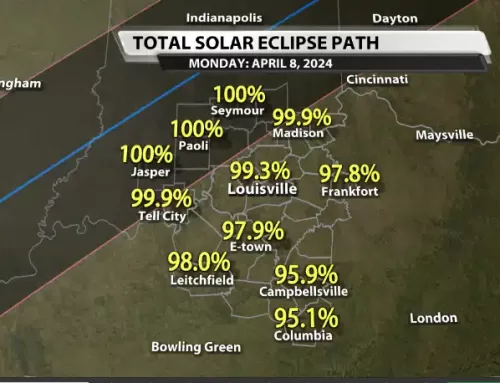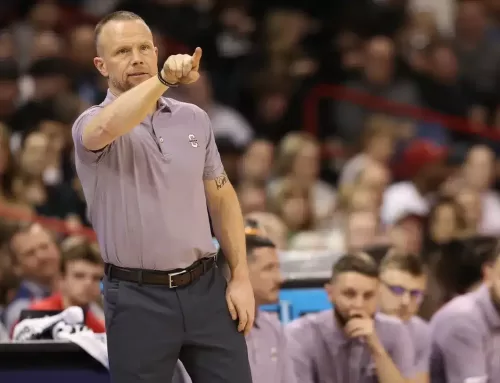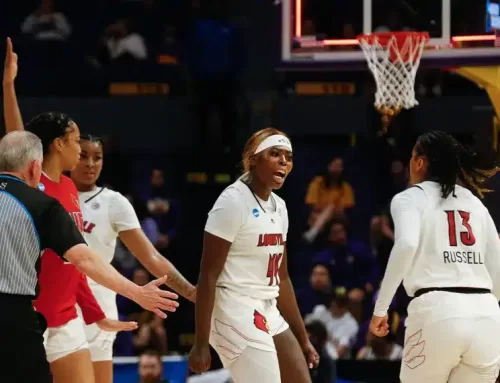By Phillip Lentsch–
Nov. 8 marks the date where Americans will elect the next President of the United States. It will conclude an election that has seen its fair share of ups and downs: the back-and-forth feuds involving Ted Cruz and Donald Trump, Twitter wars between Bernie Sanders and Hillary Clinton, felonious emails, sex scandals, etc. With the partisan divide growing even further apart between Democrats and Republicans, candidates have had to find new and innovative ways to mobilize their bases throughout the primaries.
The college vote is a specific cohort that has been able to engage in the race more than past years. With the thousands of videos, memes, tweets, statuses and updates circulating the web on this election, the youth’s attention has gravitated towards charismatic candidates such as Sanders and Trump. According to U of L political science professor Jason Gainous, the buzz surrounding them stems from social media.
“I think when you look at certain social networks – Twitter, Facebook, Snapchat – you can use them as a news aggregator,” Gainous said. “Because of the instant notifications we can get from social media, younger voters are able to more easily tap into whatever news they want to read.”
Twitter has changed the standards for journalism since its inception. Not only has it become a centerpiece for any breaking news, but it allows for athletes, celebrities, government officials and others to immediately share updates with the world, getting rid of the need for press statements. The fast-paced nature of this social network has allowed for more and more college students to gain knowledge of particular candidates and their policies – creating a more transparent process for news reporting.
This shift, however, isn’t all it’s cracked up to be, according to Gainous.
“It’s consequential,” Gainous said. “When we’re looking at something like the presidential election, we now have more control over which information we’re exposed to. The problem is, this creates this cycle of only reading the news we want or that we agree with, instead of getting a more balanced view.”
While Twitter and Facebook have expanded the media’s role as a gatekeeper for information, many question how effective social networking has been in getting the youth to vote. Despite all the online frenzies among college students, early indications from national polls already anticipate low voter turnout for 18 to 24-year-olds in November.
These predictions are historically consistent as well. According to the US Census Bureau, college voters have voted lower than all other age groups in every presidential election since 1962. Voting data also shows that, on average, less than half of these young eligible adult voters will even make it to the polls.
“In general, younger voters tend to be a riskier demographic for candidates to court because they have relatively low turnout rates in most contests,” U of L political science professor Laura Moyer said. “Obama was able to mobilize this group in his two victories and showed that having a campaign team that was effective in utilizing digital communication was a winning strategy.”
Digital communication, according to many professors, is the key to attracting voter retention among the Millennial generation. In 2012, Obama beat out Mitt Romney in the 18 to 29-year-old vote by five million voters because of it. Campaigns have changed the way they approach social media because of the massive trend towards information technology.
“I think Obama was the first to effectively use the idea of the ‘social media campaign’ to target voters back in 2008,” U of L political science professor Laurie Rhodebeck said. “Now, we’re seeing big media personalities such as Donald Trump propel himself to the forefront of the GOP through things like Twitter.”
Trump’s campaign has been unorthodox from the start. Few believed he’d make a run back in August 2015, but because of his controversial personality and savvy media strategy, voters have witnessed his rise through the medium of digital technology.
“This election hasn’t revolved around television or the newspaper. It’s all being paid attention to through the use of social media. Not just college students; even 30 and 40-year-olds are using Facebook to get their news and form opinions,” U of L student Omar Banihani said.
While college voter turnout has been low in the past, professors such as Gainous and Rhodebeck both think this upcoming election could change that. Not only are more people actually being exposed to the election’s key events, but they now have control in reaching out to others to spread a particular candidate’s message.
“Part of the reason Bernie has been so popular among young voters is because of his social media appeal,” Rhodebeck said. “Do I think he’ll be president? No. But I think he has created a shift in the way which Americans – especially young voters – see politicians through his presence on the Internet.”
“Right now, social media has fundamentally altered the flow of information,” Gainous said. “We’ve seen changes like this before with the printing press, the radio, the television. Now it’s Twitter and Facebook. I can’t even imagine what it’ll be like in ten years, but there’ll always be something that candidates will have to use before any others if they want to come out on top.”
Photo by Nick Amon / The Louisville Cardinal





